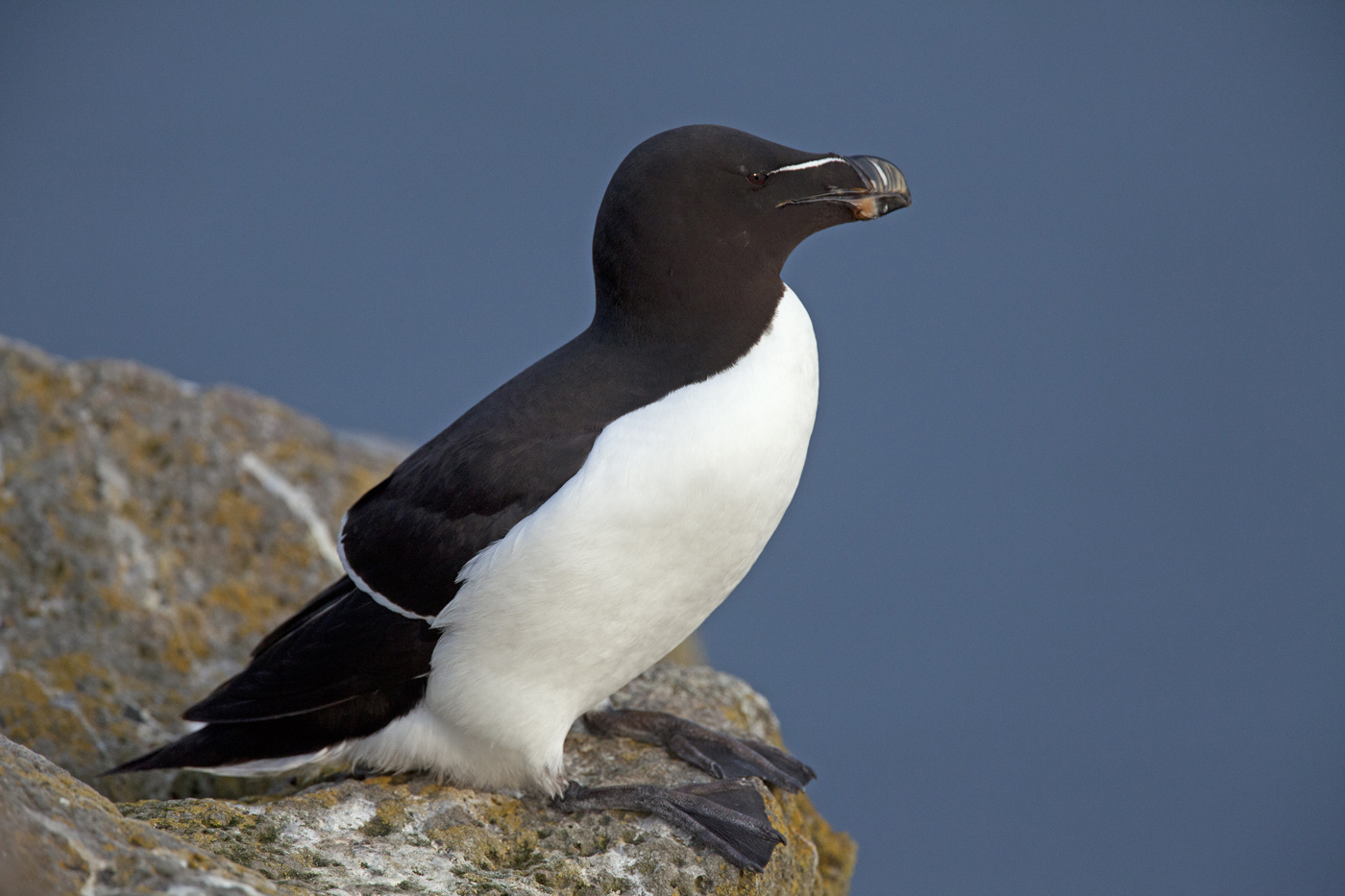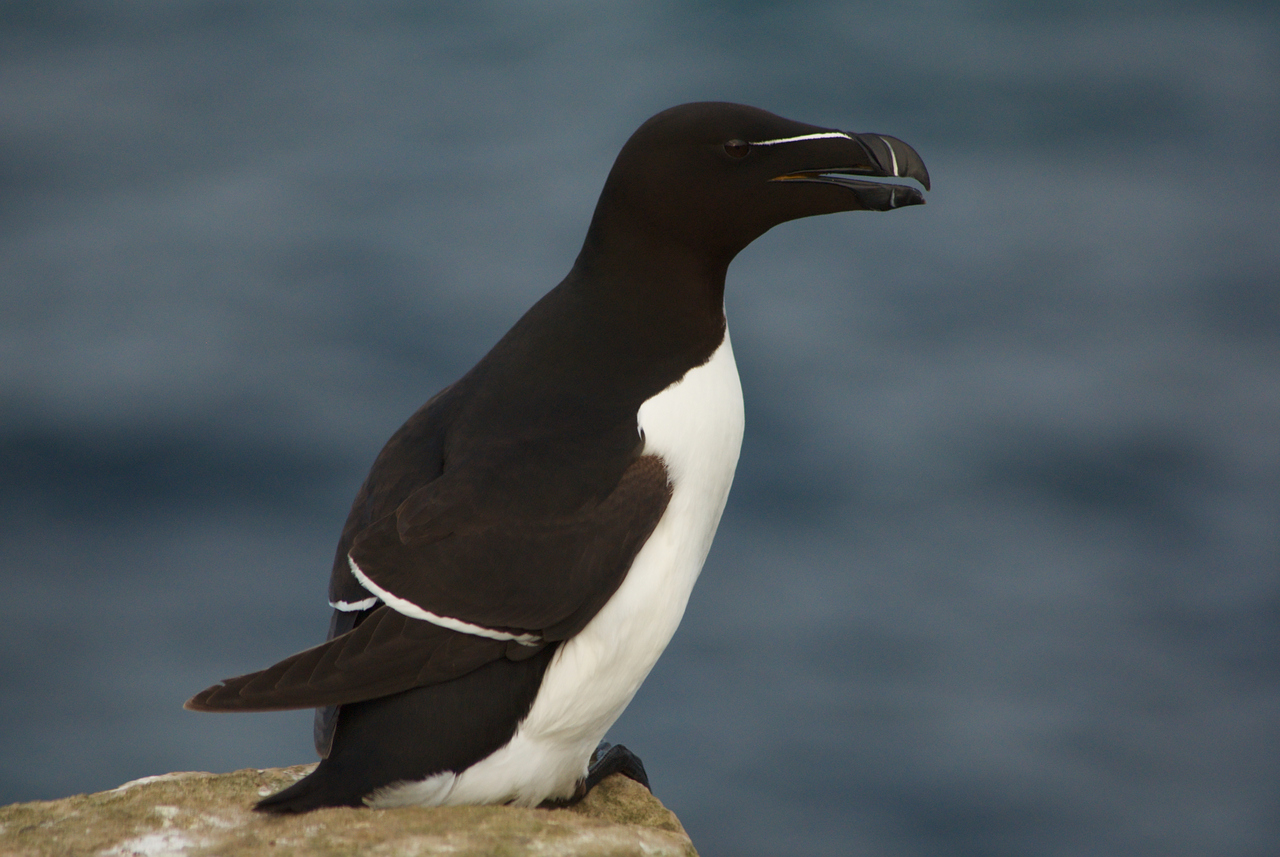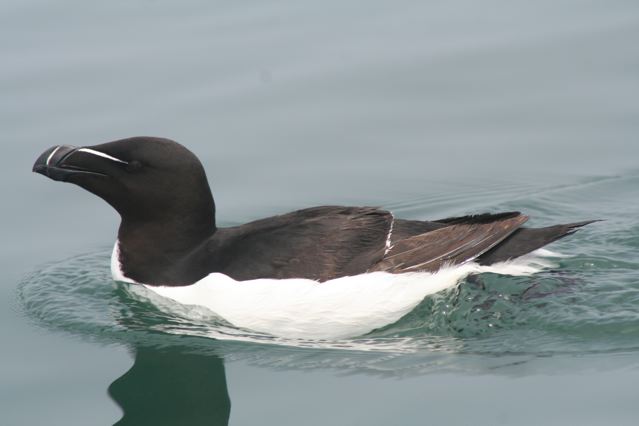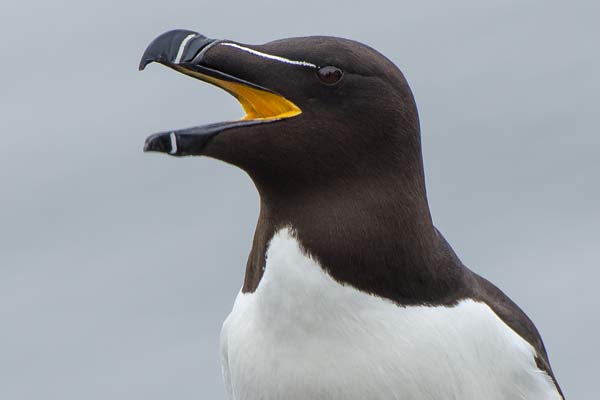
Alca torda
TAXONOMY
Alca torda Linnaeus, 1758, Baltic Sea. Two subspecies.
OTHER COMMON NAMES
English: Razor-billed auk; French: Petit Pingouin; German:
Tordalk; Spanish: Alca Comъn.
PHYSICAL CHARACTERISTICS
14.5–15.5 in (37–40 cm); 18–32 oz (515–900 g). Blackish head
and upperparts; whitish underparts. Black bill is larger than
Uria and appears rectangular; broken transverse white line
across both mandibles and another white line extending from
base of culmen to eye.
DISTRIBUTION
Winters in the open sea on the North Atlantic. Breeds on the
both coastlines of the North Atlantic.
HABITAT
Rocky coastlines and adjoining seas.
BEHAVIOR
The adults are silent at sea, while the juveniles give a whistling
call. At the breeding sites, the adults are very vocal. When
members of mated pairs approach each other, they will bow,
then growl, and then put on a show of “billing,” in which the
head is tossed about, the bill swung all around, and the
mandibles clicked together.
FEEDING ECOLOGY AND DIET
More than 90% of a razorbill’s diet is fish, although the bird
will ingest some invertebrates.
REPRODUCTIVE BIOLOGY
Razorbills most often breed in breed in small groups, usually
together with murres. The single egg is white or light creamcolored
with brownish spots and streaks. Young razorbills are
born after about 35 days and get their second down coat 17–22
days after that, when they have reached a quarter of the adult
weight. At that time, they leave the nest to go to sea with their
male parents.
CONSERVATION STATUS
Some razorbills are killed during legal hunts for murres. Razorbills
are the least numerous of North American Atlantic
auks, and the population declined significantly in the 1960s and
1970s. However, the species is not in imminent danger.
SIGNIFICANCE TO HUMANS
None known.
Other popular Animals
Photo Gallery of - Razorbill




 Animalia Life
Animalia Life